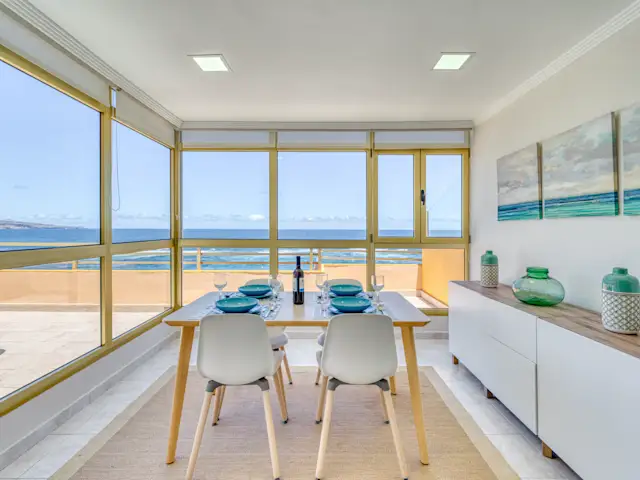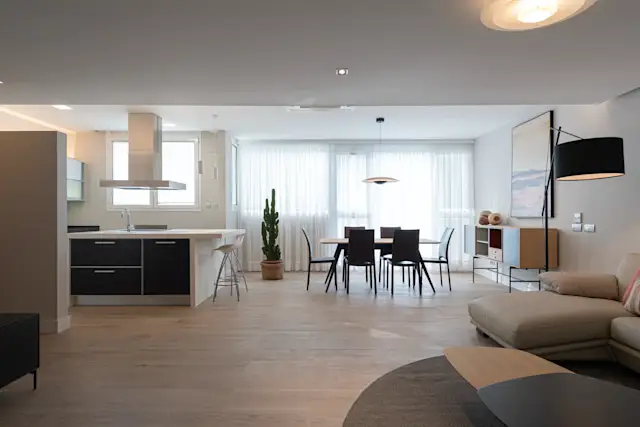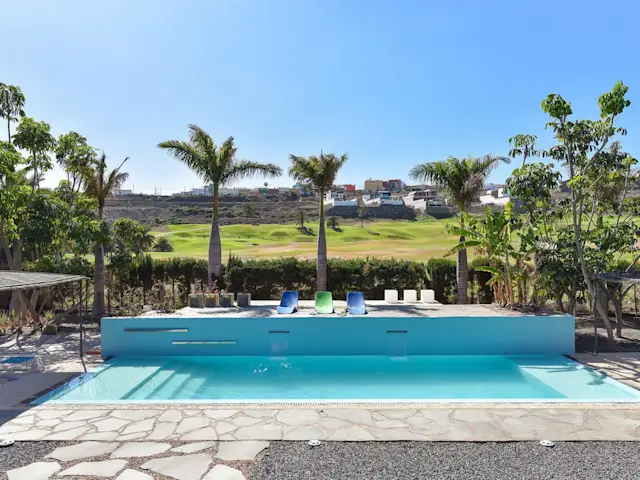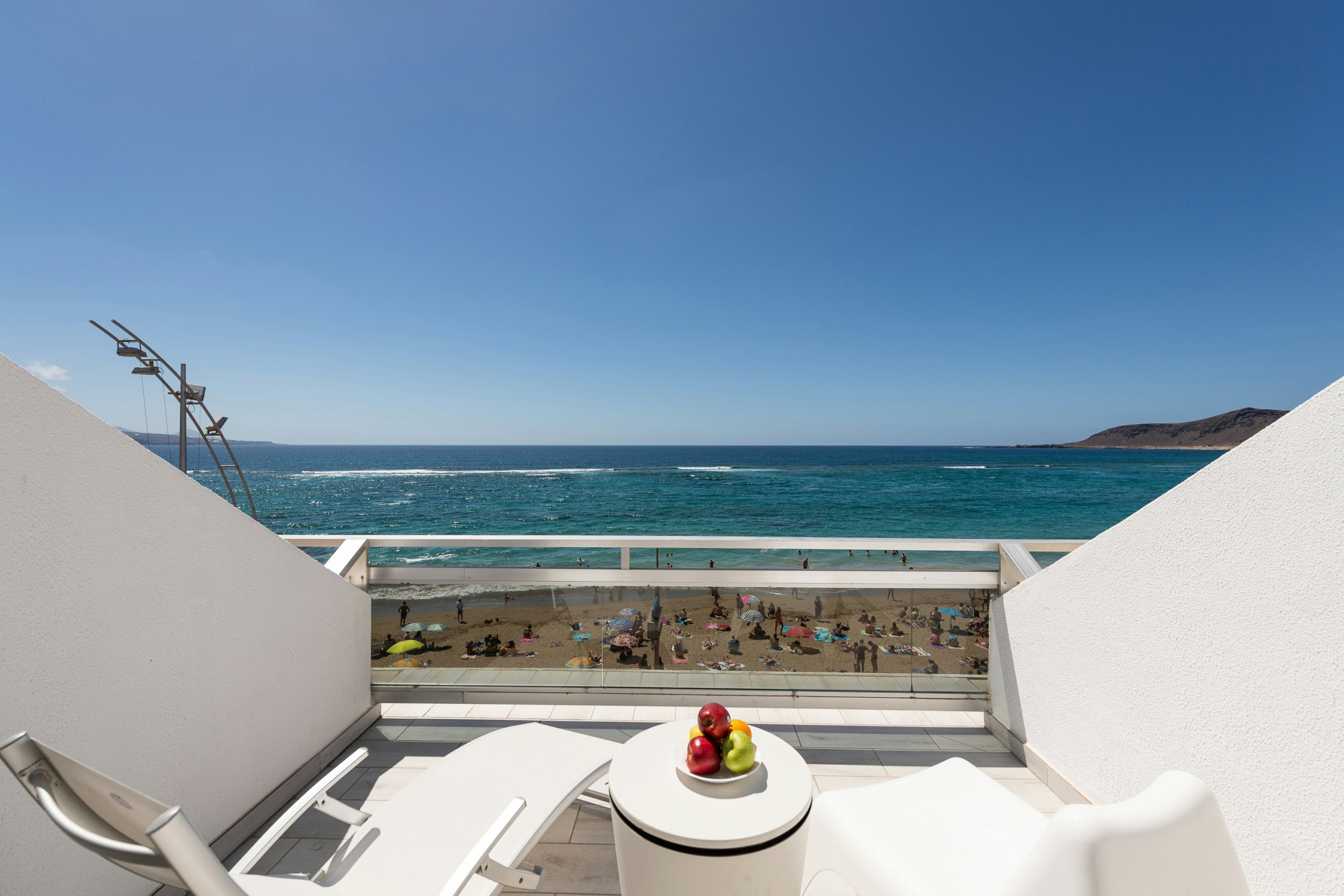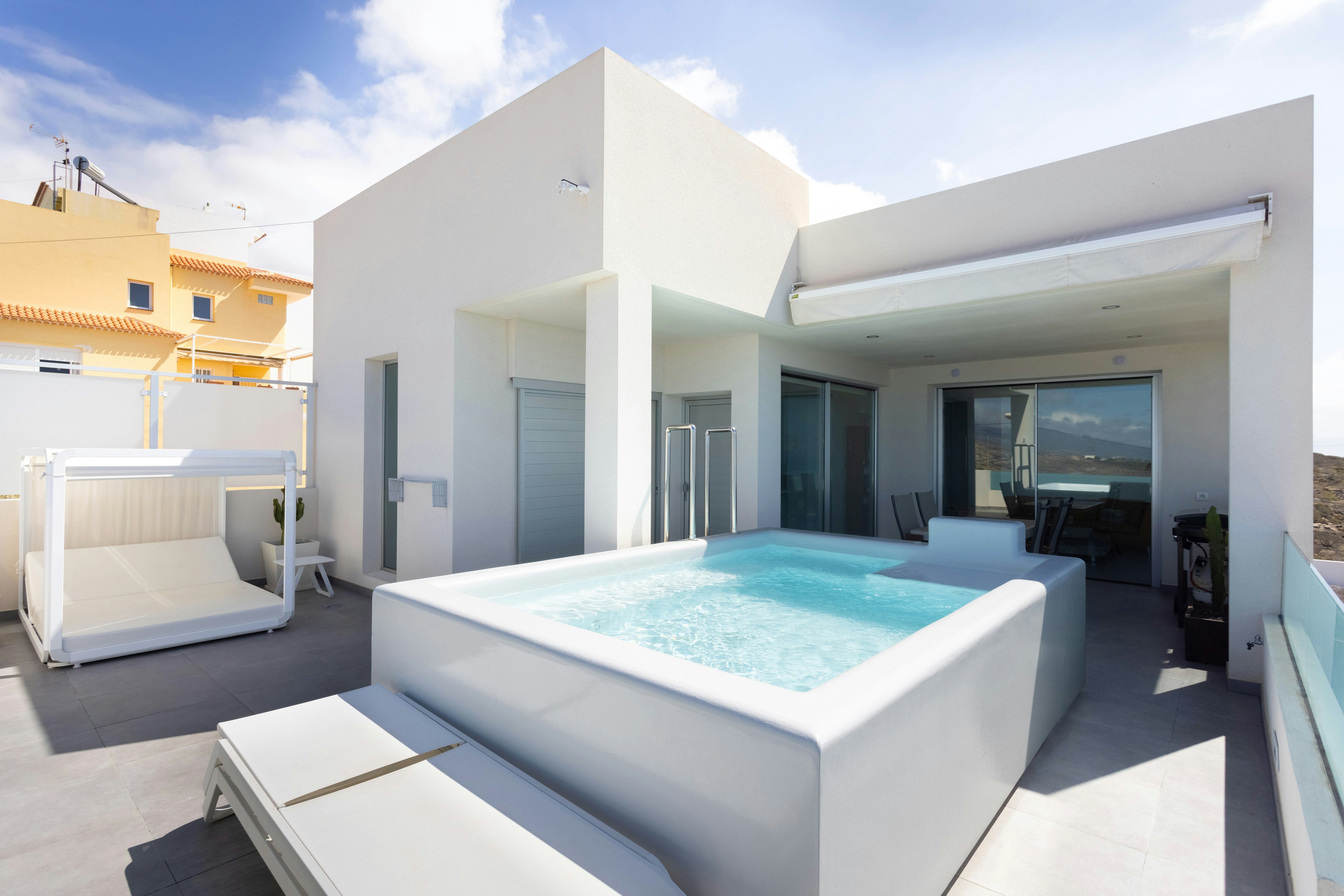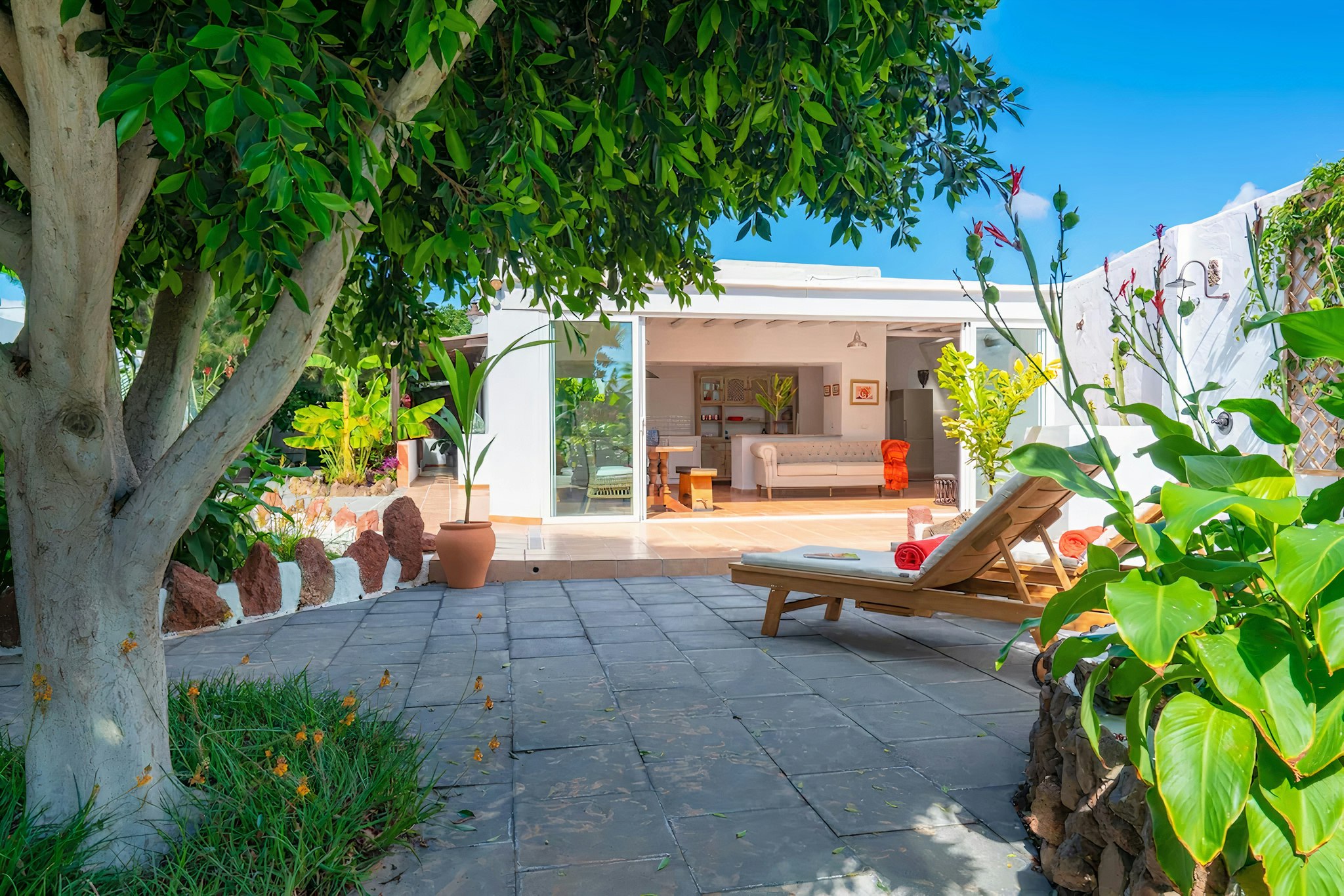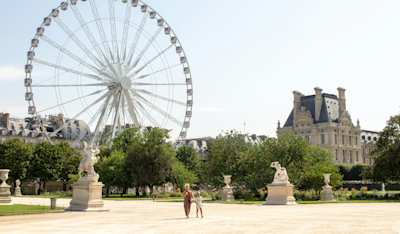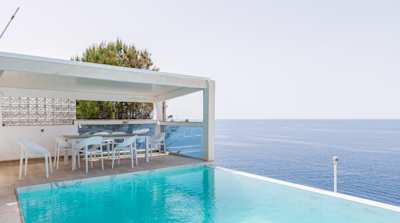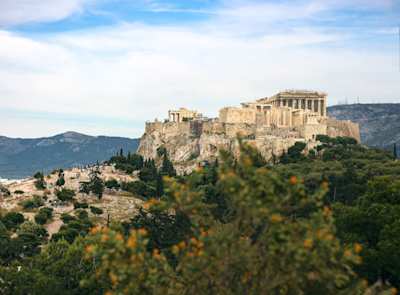Be Captivated By Las Palmas: Eight Wonderful Reasons to Visit the City
The city makes for the perfect base to explore the rest of this beguiling island
~
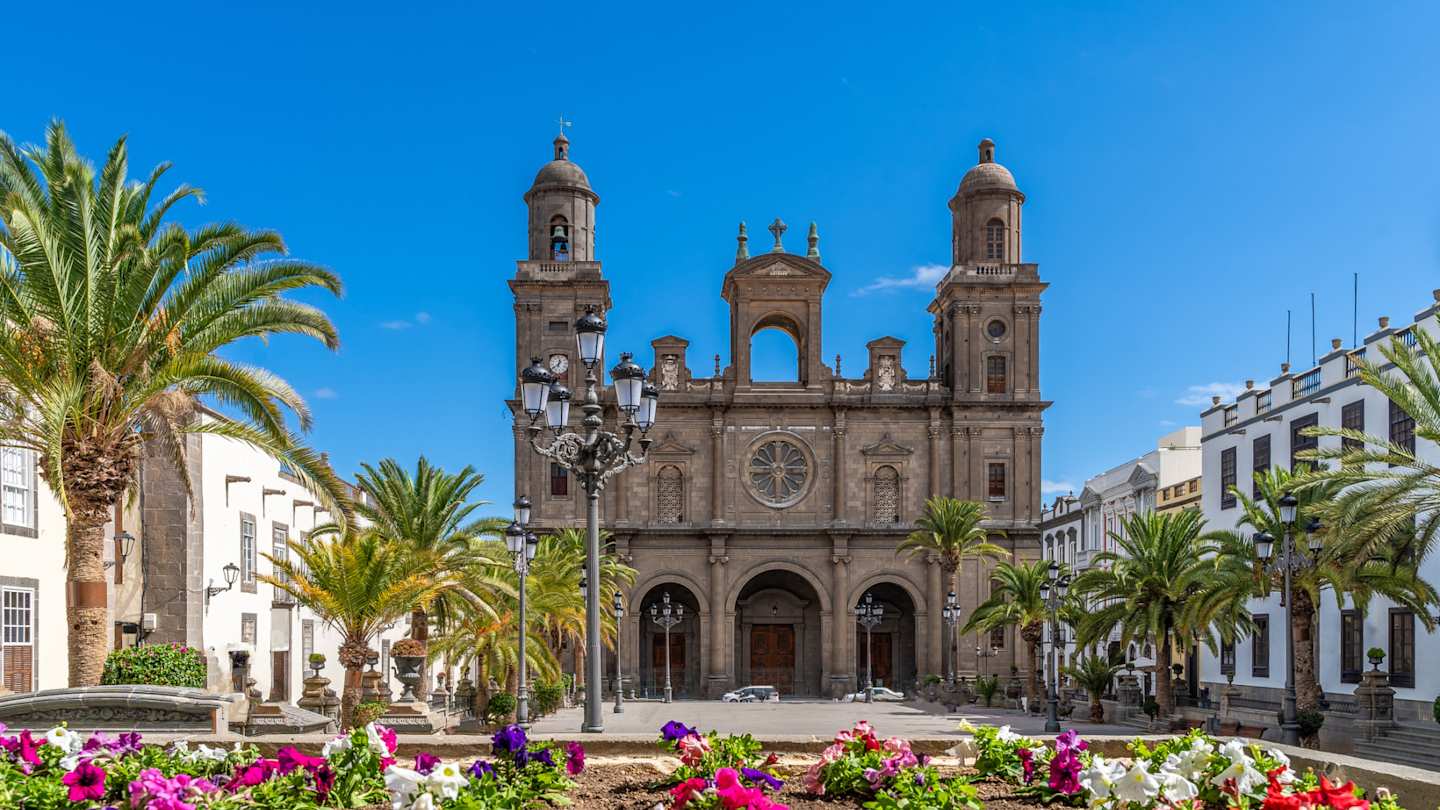
With its Spanish yet uniquely distinct vibe, the capital of Gran Canaria is a fascinating place. Days here involve diving into the island’s past and getting active in nature. Take a cooling dip in between sightseeing and shopping, before dining on fresh seafood and traditional Canarian dishes; all washed down with a glass of local wine. Like the sound of that? The travel experts at Plum Guide know everything about this vibrant city and have put together the top reasons why you should visit Las Palmas. Say hola to your new favourite holiday destination.
1. Sun-soaked beaches
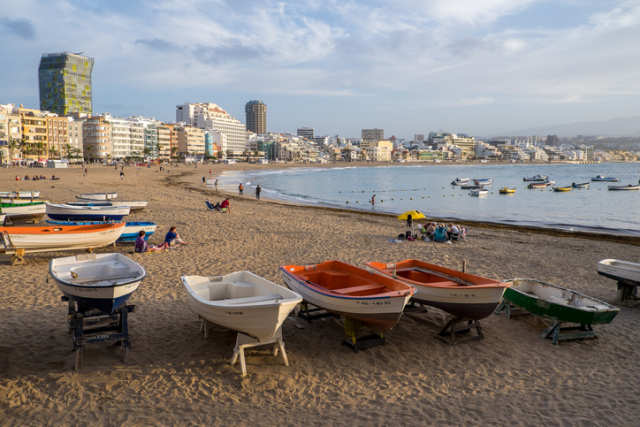
Las Canteras beach in Las Palmas, Gran Canaria
Gran Canaria is a paradise for beach bums, and while most visitors tend to gravitate towards the shores on the south of the island, you may be surprised to hear that there is a range of beautiful beaches around the city of Las Palmas. Las Canteras is the main beach, and at 3.5 kilometres long, locals treat it as several separate beaches, which include Playa Grande, Playa Chica, Peña de la Vieja and La Cicer. Each offers something different, whether you want to sunbathe, snorkel, swim, surf or play sports. If you’re travelling with the family, Playa de las Alcaravaneras offers a wide sweep of clean, golden sands to hang out and play ball games on. The water here is very calm, and you’ll often see kids learning how to kayak. For those who prefer a quieter, more natural beach, Playa El Confital sees rock pools and sheltered inlets replace bars and restaurants. It also happens to be a haven for naturists, but avoid any potentially awkward situations by only stripping from the end of the wooden boardwalk.
2. Exquisite food
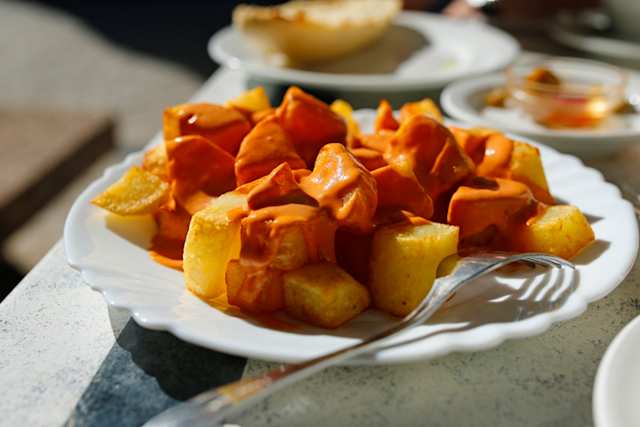
The patatas bravas baked potatoes with spicy tomato sauce
If you’re the type of traveller who leads with their taste buds, then you’ll love Las Palmas and Gran Canaria. Traditional Canarian food focuses on simple ingredients like seafood, fresh fruit and vegetables, which are so high quality that they don’t need any flavour enhancements. Although there are similarities with Spanish cuisine, the food in Gran Canaria has its distinct style with a large influence from Africa. While you’ll find patatas bravas in the rest of Spain, here you’re more likely to order papas arrugadas, a boiled potato dish served with a chilli pepper garlic sauce called mojo rojo. Another typical dish is pulpo a la Canaria, a humble dish of octopus and potatoes in a spicy sauce of garlic, chillies and Jerez vinegar. The best way to eat, of course, is with the locals. Head to casual tavernas for home-style dishes, and sample street food when you’re out sightseeing.
3. Wine tasting
The island’s excellent wine is one of the top reasons why you should visit Las Palmas. With its mountainous terrain and rippled topography, Gran Canaria plays host to various microclimates ideal for wine growing. The most popular variety is Listán, used to make both white and red wines, while Moscatel grapes are grown to produce sweet wines. Other significant grape varieties grown in the region are Tintilla, Tinta Negra Mole, Malvasia Rosada, Gual and Marmajuelo. Luckily for you, there are plenty of wineries and vineyards you can visit from Las Palmas. One of the most well-known is Bodegas Bentayga, perched at 1,300 metres above sea level – as you can imagine, the views from here are out of this world. Another winery worth a visit is Bodega Los Berrazales, a 200-year-old estate which produces red, dry white and semi-dry white wines. If rum is more your tipple, be sure to swing by the Arehucas Distillery in Arucas, which dates back to 1885.
4. Buzzing nightlife
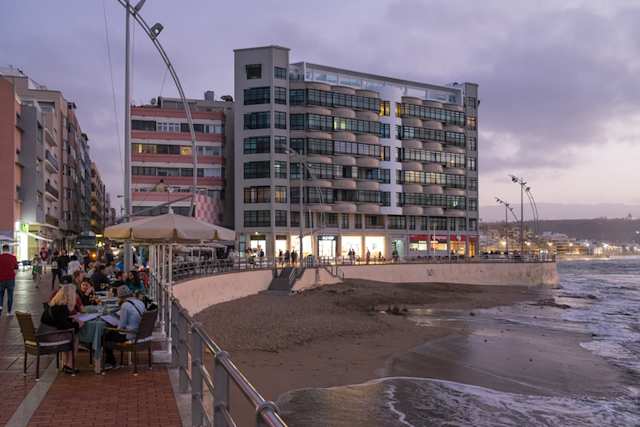
Las Canteras beach at night, Gran Canaria
Canarians love to have a good time, and this is evident from the lively atmosphere which emanates from the bars and pubs after sundown. Las Palmas is the main nightlife hotspot in the north of the island, and there’s something for everyone here, whether you’re into live music, cocktails or craft beers. Those who enjoy a fun night out while on holiday should head to the neighbourhoods of Vegueta and Triana, where you can bar hop between the huge choice of bars. Better still, take part in the Ruta de los Pinchos (a tapas bar crawl) to quench your thirst and sate your appetite. Younger crowds tend to flock to Calle Canaleja and the surrounding area, as well as the nightclubs in the port area. You’ll also come across plenty of rooftop bars for magical views over the city and coast.
5. Intriguing history
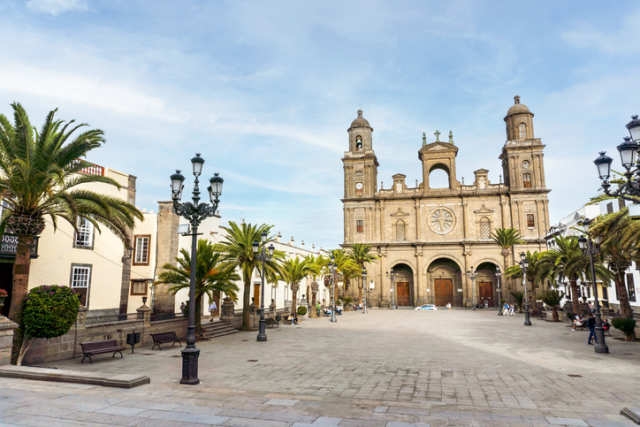
Square Plaza de Santa Ana and Cathedral of Las Palmas de Gran Canaria in Vegueta District
For a historical tour of Las Palmas, head to the oldest and most picturesque district of Vegueta. As you meander along the narrow cobbled streets, don’t forget to look up at the grand old buildings built in the traditional architectural style of the Canary Islands. Make your way down Los Balcones and Espíritu Santo until you reach Plaza de Santa Ana and the Cathedral of Santa Ana. This is one of the city’s most splendid buildings, built across four centuries and featuring Gothic, Renaissance and Neoclassical architecture. Take the lift ride up the south tower for fantastic views over the city. Continue your historical explorations to the Museo Canario, where you can learn about the pre-colonial history of the Canary Islands. Other interesting buildings in the area are the Episcopal Palace, the Casas Consistoriales, the chapel of San Antonio Abad and Casa de Colón, an ornate mansion which houses a museum dedicated to Christopher Columbus’s voyages.
6. World-class shopping
A haven for duty-free shopping, Las Palmas is the best place to be for some serious retail therapy. One of the main shopping areas is Calle Mayor de Triana and its surrounding area. Surrounded by stunning Art Nouveau buildings, there is a wide range of shops to pop into, including local crafts and designer names. If markets are your thing, you’re spoiled for choice in Las Palmas. As well as weekly markets like Mercado Central, there are also weekend pop-ups like Mercadillo de Vegueta, where you’ll find arts and crafts as well as local song and dance performances. Held in the Plaza de Pilar Nuevo, this charming square is a great place to sit back and soak up the atmosphere. Down by the beach, you have the Mercado del Puerto, which offers fresh produce by day, and tapas and drinks by night. For fresh produce, take a fifteen-minute bus ride out of the city to San Lorenzo’s farmers market.
7. Incredible natural wonders
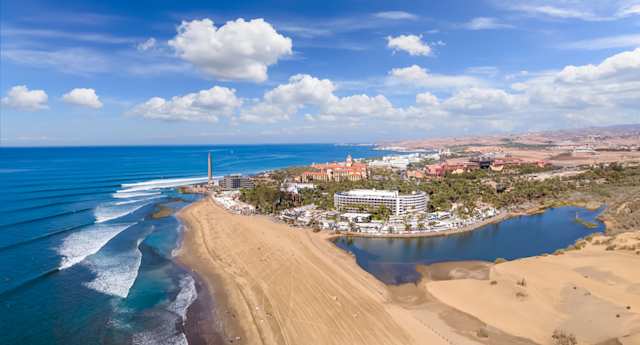
Aerial view of Maspalomas beach and town in Gran Canary, Spain
Gran Canaria’s spectacular natural beauty is a good enough reason why you should visit Las Palmas. An outdoor adventure is never too far away, and just on the doorstep of the city is Caldera de Bandama or the Cauldron of Bandama. Formed 5000 years ago along with the ancient volcano Pico de Bandama, the crater is a whopping 1000 metres wide. Take a trek through the crater and spot plants such as white echium and wild olive trees, as well as island birds like kestrels and blackcaps. Another must-visit is the Dunes of Maspalomas. Located on the south coast of the island, you’ll be forgiven for thinking you’ve just landed in the Sahara Desert. This protected nature reserve stretches for around 1000 acres and is made up of a beautiful beach, brackish lagoon and palm grove where you can spot migratory birds taking a rest. Trails are in place to walk around the dunes, and you can even take a camel ride if you’re looking for something a little different.
8. Photogenic hiking trails
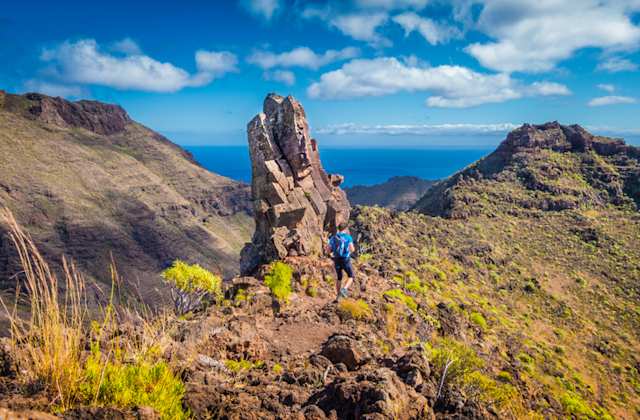
Hiker on a trail in the Canary Islands
Given the island’s topography, Gran Canaria is a hiker’s paradise. Its rugged, mountainous interior provides many hiking trails ranging from easy to challenging. For a quick day hike, the trail around Santa Lucia is a favourite. This 10-kilometre trail passes through meadows, orange orchards, palm groves and the archaeological site of Montaña de los Huesos. For something longer, the 22-kilometre hike from San Pedro takes you through a shaded pine forest and up the mountains for views of Agaete and the port of Puerto de Las Nieves. If you’re up for a challenge, you may want to tackle the long-distance Camino de Santiago. Not to be confused with the official hike of the same name in mainland Spain, this trail is 66 kilometres long and takes about twenty-four hours to complete, although some people choose to slow it down and complete it over three days. The trail connects the south of the island from Faro de Maspalomas, with the northwest of the island ending at the Church of Santiago de los Caballeros in Gáldar.
